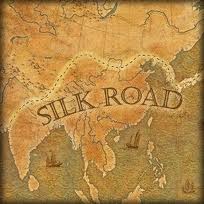It likely will not be as Herculean an effort as it was for China’s Han dynasty to expand the Silk Road trade routes, but banks are turning to big data to help uncover their own Silk Roads, according to a recent Wall Street Journal article.
 Four of the nation’s largest banks are beginning to exploit data analysis to successfully tap into the gold mine of information often hidden in big data, unstructured data like social media posts and call center notes that don’t easily fit into conventional databases.
Four of the nation’s largest banks are beginning to exploit data analysis to successfully tap into the gold mine of information often hidden in big data, unstructured data like social media posts and call center notes that don’t easily fit into conventional databases.
For example, JPMorgan Chase & Co is combining its credit card and transactional data with publicly available information from the US government to unearth consumer trends, which the bank is then offering to its clients.
“The technology allows the bank to break down the consumer market into smaller and more narrowly identified groups of people, perhaps even single individuals,” according to the article.
This has been a challenge for many banks as they have historically struggled to aggregate all available information about a particular customer when integrating multiple disparate systems from the companies they have acquired.
Jeff Harte, a bank analyst with Sander O’Neill, tells the WSJ that lenders are moving beyond traditional analysis of customers’ credit-worthiness and “are analyzing the behavior of customers.” They’re using data analysis to combine insight from credit card statements and social media posts, seeking answers to questions such as whether customers always eat dinner out or whether they offset shopping at high-end department stores with trips to discount stores, he adds.
“It’s a step beyond analyzing credit quality and towards analyzing the customers’ behavior,” he says.
Bank of America has used big data analytics to find out why many of its commercial customers are defecting to smaller banks.
Catherine Bessant, who runs technology and operations at Bank of America, says the bank uses data from customer behavior on its own website as well as from call center logs and transcripts of one-on-one customer interviews to determine why it’s losing those customers.
Citi is experimenting with offering commercial customers transactional data it has aggregated from its global customer base, which clients can use to identify new trade patterns.
“New Silk Roads are being created, and we think this information could show signs for which might be the next big cities in emerging markets,” says Don Callahan, who manages internal operations and technology at Citi.
The bank has shared such information with a large Spanish clothing company, which has used that data to determine where to open a new manufacturing facility and several new stores.
Analyzing big data represents “a significant opportunity for cross-selling and customized marketing because you have new technologies and techniques that give you access to pools of data that used to be unreachable. That changes the game and can create significant opportunities you didn’t have before,” notes Thomas Sanzone, a senior vice president at consulting firm Booz Allen Hamilton, who advises financial services firms.
The type of new business models the banks are creating by aggregating and offering analyzed data to clients is one of the biggest opportunities to leverage big data, notes R “Ray” Wang, principal analyst and CEO at Constellation Research, in Harvard Business Review.
“Opportunities will arise for new forms of information brokering and new types of brokers that address new unstructured, often open data sources such as social media, chat streams, and video,” Wang says. “The permutations of available data will explode, leading to sub-sub specialized streams that can tell you the number of left-handed Toyota drivers who drink four cups of coffee every day but are vegan and seek a car wash during their lunch break. New players will emerge to bring these insights together and repackage them to provide relevancy and context.”
Next Steps:
- Subscribe to our blog to stay up to date on the latest insights and trends in data analysis and big data analytics.
Heather Harreld
Spotfire Blogging Team





